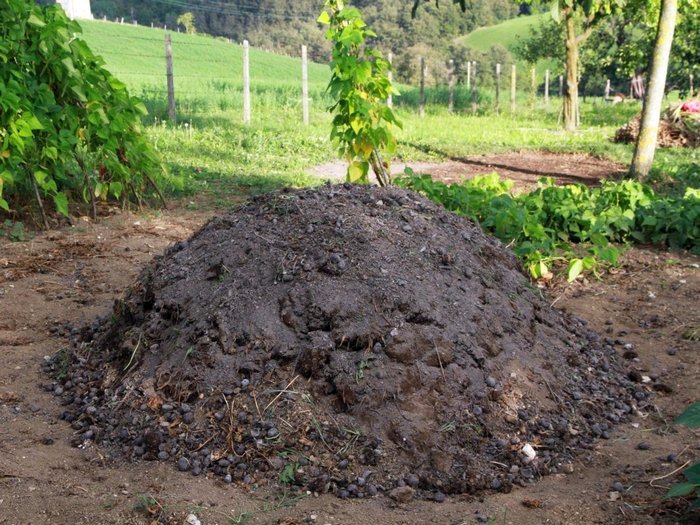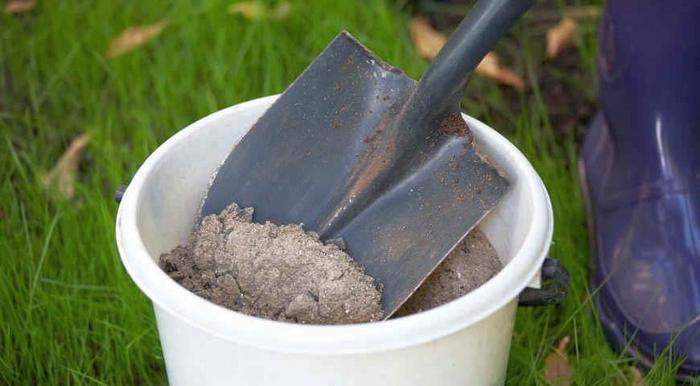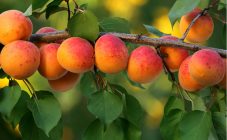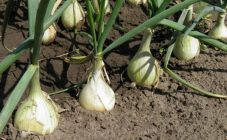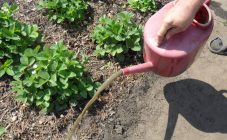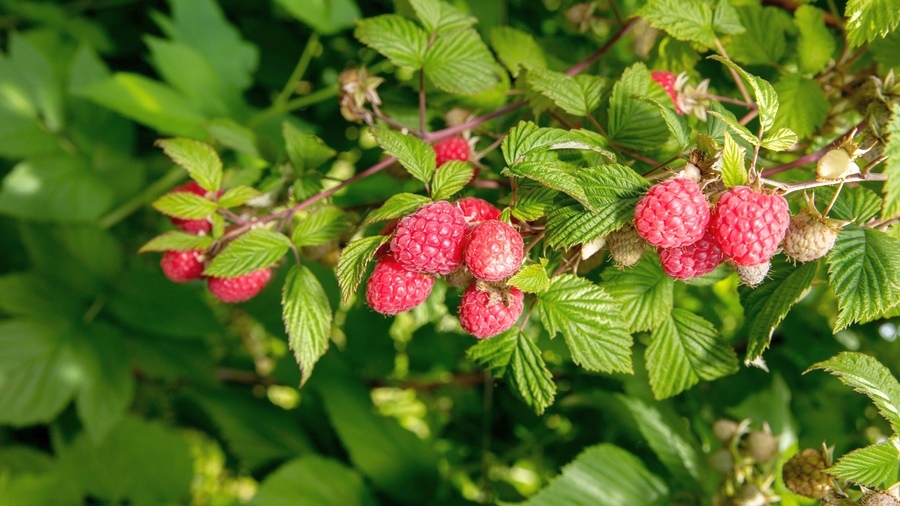Content:
Growing garden raspberries, like other berry crops (strawberries, gooseberries, currants), requires its spring feeding with nitrogen-containing fertilizers. The further growth and development of the plantation during the current season, its yield and resistance to unfavorable environmental factors depend on how correctly and on time it will be produced.
The purpose of spring feeding raspberries
Spring feeding of raspberries has several goals:
- Acceleration of growth and development of shoots, which in the future will provide amicable flowering and fruiting, a high yield;
- Increasing the resistance of the crop to pests and diseases during the growing season;
- Prevention of oppression and overgrowing of the plantation with fast-growing weeds.
Quantity and timing
The amount and timing of raspberry dressing in spring depends on soil fertility and weather conditions:
- On medium - and low-fertile sandy and dense loamy soils, raspberries are fed twice in the spring. The first top dressing is performed in early spring (April), after the snow melts and the topsoil thaws to a depth of 5-10 cm. The second top dressing is performed 2 weeks after the first (in early to mid-May);
- On fertile soils, as well as in the event that the winter was long, they are limited to one spring feeding on thawed soil.
Mineral fertilizers are applied to the first feeding, and organic fertilizers to the second. This scheme allows you to activate the growth of shoots at the initial stage, since mineral nitrogen is absorbed by plants much faster than that contained in organic fertilizers.
The rate of nitrogen application in spring feeding for raspberries in summer cottages and household plots averages 50-60 g / sq.
How and what to feed raspberries in spring
Feeding raspberries in early spring is done:
- Mineral fertilizers;
- Organic fertilizers;
- Ash.
Mineral fertilizers
For feeding raspberries in the spring, nitrogen-containing mineral fertilizers are used, such as:
- Urea (carbamide) - apply this fertilizer in early spring on thawed soil at a dose of 10 g / sq. Since nitrogen in urea is in an ammoniacal form that easily evaporates in air, the fertilizer must be embedded in the soil when loosening;
- Ammonium nitrate - like carbamide, saltpeter is applied in early spring in a scattered way at a dose of 10-15 g / m2. Unlike urea, saltpeter does not require incorporation into the soil;
- Ammofoska - this complex fertilizer is applied at a dose of 20-30 g / m2. on thawed soil with obligatory incorporation when loosening.
Organic fertilizers
Of the organic fertilizers for feeding raspberries, the following are used:
- Manure (cow or horse) - 3-4 kg of fresh mullein is placed in a bucket, poured with 10-12 liters of water and insisted for a week, stirring occasionally. After the solution is infused and fermented, it is diluted with water in a ratio of 1:10. The consumption of the resulting liquid fertilizer is 10-12 l / sq.;
- Chicken droppings - prepare it in the same way as the previous liquid fertilizer. The only difference is that the resulting infusion is diluted with water in a ratio of 1:20 for use. The dosage of the diluted concentrate is 10 l / m2;
- Humus (rotted manure) - applied both as fertilizer and mulch. In the first case, it is embedded in the soil by loosening at a dose of 8 kg / sq. (1 bucket), in the second - evenly spread over the soil surface in a layer 5-10 cm thick;
- Compost - well-rotted composts based on peat, manure, household organic waste are used. Like manure, humus is applied as mulch or fertilizer for embedding by shallow loosening. Application dose - 1 bucket (8-9 kg) / sq.m .;
- Weed infusions - this folk recipe allows you to feed raspberries without spending money on buying expensive fertilizers, while freeing the garden from weeds. It is prepared as follows: freshly cut juicy nettle is chopped, poured with water and infused (fermented) in the sun for 5-7 days. Then the resulting product (concentrate) is diluted with water in a ratio of 1: 5, obtaining a nutrient solution that can be used to feed the raspberry plantation very effectively.
Ash
Wood ash is a good option for feeding raspberries in the spring. Fresh ash not only nourishes the soil with macro- and microelements, but also suppresses pathogenic fungal microflora, improves its soil structure, and reduces acidity.
In order to feed raspberries with ash, you must:
- Pour ash into a 200 ml glass (100 grams of ash);
- Pour the contents of the glass into a 10 liter bucket;
- Pour water to the top of the bucket;
- Stir the ash in water, without waiting until it settles to the bottom, pour the raspberries obtained by the suspension.
In addition, ash can also be applied in dry form - for this it is scattered over the surface of the soil and covered with shallow loosening. Ash consumption rate for this application is 100 g / m2.
Errors in the spring feeding process
After we figured out how, when and how to fertilize raspberries in the spring, we should also consider the typical mistakes that inexperienced or inattentive gardeners make. Among them, the following are most common:
- Failure to comply with the terms of spring feeding - not in time, the top dressing made will not be able, even with an increased dose, to correct the depressed state of the plant and the weak development of foliage, inflorescences and fruits in the future. The spring term for applying top dressing must be strictly observed - a weakened plant in the future will not be able to give a large harvest and resist the influence of unfavorable environmental factors;
- Increased or decreased application dose - both in the first and in the second case, non-compliance with the dosage of nitrogen fertilizers for feeding the crop will bring him significant harm. An increase in the dose will lead to an increased growth of the vegetative mass, which in the future will restrain flowering and fruit setting - if you fertilize the crop abundantly, you can get a lush raspberry bush with small and very often not having time to ripen fruits. A reduced dose will lead to poor growth and development of plants, an increase in their damage to diseases and pests, the formation of a small number of inflorescences, and the loss of ovaries;
- Uneven application - with uneven application of fertilizers (especially mineral), some plants develop stronger than others, grow faster than them, competing very strongly with them for moisture and nutrients. The result of uneven application of nitrogen fertilizers during spring feeding may be the loss of individual bushes, which received too little or, on the contrary, a critically large dose. In this case, weeds will develop in the place of the dead bush.
If a summer resident or gardener properly feeds this crop in the spring, then his raspberry plantation will become prettier every year more and more, while giving high yields of large and tasty berries. Otherwise, if the above recommendations are not followed, the raspberry plant will often get sick, overgrow with weeds, even a small amount of pests will cause significant damage to it. In the future, such a plantation will degenerate and become unusable much earlier than the one that is fed in compliance with all requirements and recommendations.


